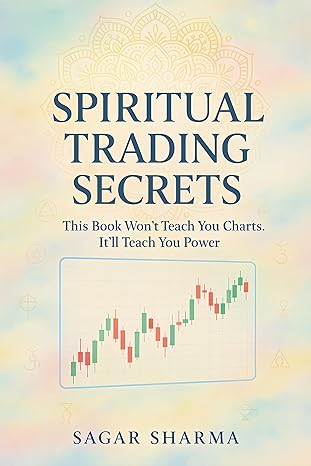1.1: OPTION BASICS This section introduces options and the history of options trading. The definition of call and put options, and how they can be used to gain long or short equity exposure, is explained. Key definitions and terminology are given, including strike, expiry, intrinsic value, time value, ATM, OTM and ITM. HISTORY OF VOLATILITY TRADING While standardised exchange traded options only started trading in 1973 when the CBOE (Chicago Board Options Exchange) opened, options were first traded in London from 1690. Pricing was made easier by the Black-Scholes-Merton formula (usually shortened to Black- Scholes), which was invented in 1970 by Fischer Black, Myron Scholes and Robert Merton. Option trading exploded in the 1990s The derivatives explosion in the 1990s was partly due to the increasing popularity of hedge funds, which led to volatility becoming an asset class in its own right. New volatility products such as volatility swaps and variance swaps were created, and a decade later futures on volatility indices gave investors listed instruments to trade volatility. In this chapter we shall concentrate on option trading. CALL OPTIONS GIVE RIGHT TO BUY, PUTS RIGHT TO SELL A European call is a contract that gives the investor the right (but not the obligation) to buy a security at a certain strike price on a certain expiry date (American options can be exercised before expiry). A put is identical except it is the right to sell the security. Call option gives long exposure, put options give short exposure A call option profits when markets rise (as exercising the call means the investor can buy the underlying security cheaper than it is trading, and then sell it at a profit). A put option profits when markets fall (as you can buy the underlying security for less, exercise the put and sell the security for a profit). Options therefore allow investors to put on long (profit when prices rise) or short (profit when prices fall) strategies.
چکیده فارسی
1.1: مبانی گزینه ها این بخش گزینه ها و تاریخچه معاملات گزینه ها را معرفی می کند. تعریف اختیار خرید و فروش و نحوه استفاده از آنها برای به دست آوردن قرار گرفتن در معرض سهام بلندمدت یا کوتاه توضیح داده شده است. تعاریف و اصطلاحات کلیدی از جمله اعتصاب، انقضا، ارزش ذاتی، ارزش زمانی، ATM، OTM و ITM ارائه شده است. تاریخچه معاملات نوسان در حالی که گزینه های معامله استاندارد شده در بورس تنها در سال 1973 شروع به معامله کردند که CBOE (بورس اختیارات هیئت مدیره شیکاگو) باز شد، اختیار معامله برای اولین بار از سال 1690 در لندن انجام شد. قیمت گذاری با فرمول بلک-اسکولز-مرتون آسان تر شد (معمولاً به کوتاه شدن به کوتاه شده است. بلک اسکولز) که در سال 1970 توسط فیشر بلک، مایرون اسکولز و رابرت مرتون اختراع شد. معاملات اختیار معامله در دهه 1990 منفجر شد انفجار اوراق مشتقه در دهه 1990 تا حدی به دلیل محبوبیت فزاینده صندوق های تامینی بود که منجر به تبدیل شدن نوسانات به یک طبقه دارایی به خودی خود شد. محصولات نوسانات جدید مانند سوآپ نوسانات و سوآپ های واریانس ایجاد شدند و یک دهه بعد معاملات آتی در شاخص های نوسان به سرمایه گذاران ابزارهای فهرست شده ای برای تجارت نوسان داد. در این فصل ما بر معاملات اختیاری تمرکز خواهیم کرد. گزینه های تماس حق خرید را می دهد، حق فروش را می دهد تماس اروپایی قراردادی است که به سرمایه گذار این حق را می دهد (اما نه تعهدی) برای خرید اوراق بهادار با قیمت اعتصاب معین در تاریخ انقضای معین (اختیارهای آمریکایی را می توان قبل از آن اعمال کرد. انقضا). یک قرار یکسان است به جز اینکه حق فروش اوراق بهادار است. گزینه Call در معرض طولانی قرار میدهد، گزینههای فروش قرار گرفتن در معرض کوتاه قرار میگیرند. یک اختیار خرید زمانی سود میکند که بازارها بالا میروند (زیرا اعمال فراخوان به این معنی است که سرمایهگذار میتواند اوراق بهادار زیربنایی را ارزانتر از معامله آن بخرد و سپس آن را با سود بفروشد). یک اختیار فروش زمانی سود می کند که بازارها سقوط می کنند (زیرا می توانید اوراق بهادار زیربنایی را با قیمت کمتری خریداری کنید، از فروش استفاده کنید و اوراق بهادار را برای سود بفروشید). بنابراین، گزینهها به سرمایهگذاران اجازه میدهند تا استراتژیهای بلند (سود زمانی که قیمتها افزایش مییابد) یا کوتاه (سود زمانی که قیمتها کاهش مییابد) استفاده کنند.
ادامه ...
بستن ...
Author(s): Colin Bennett
Year: 2014
ادامه ...
بستن ...










